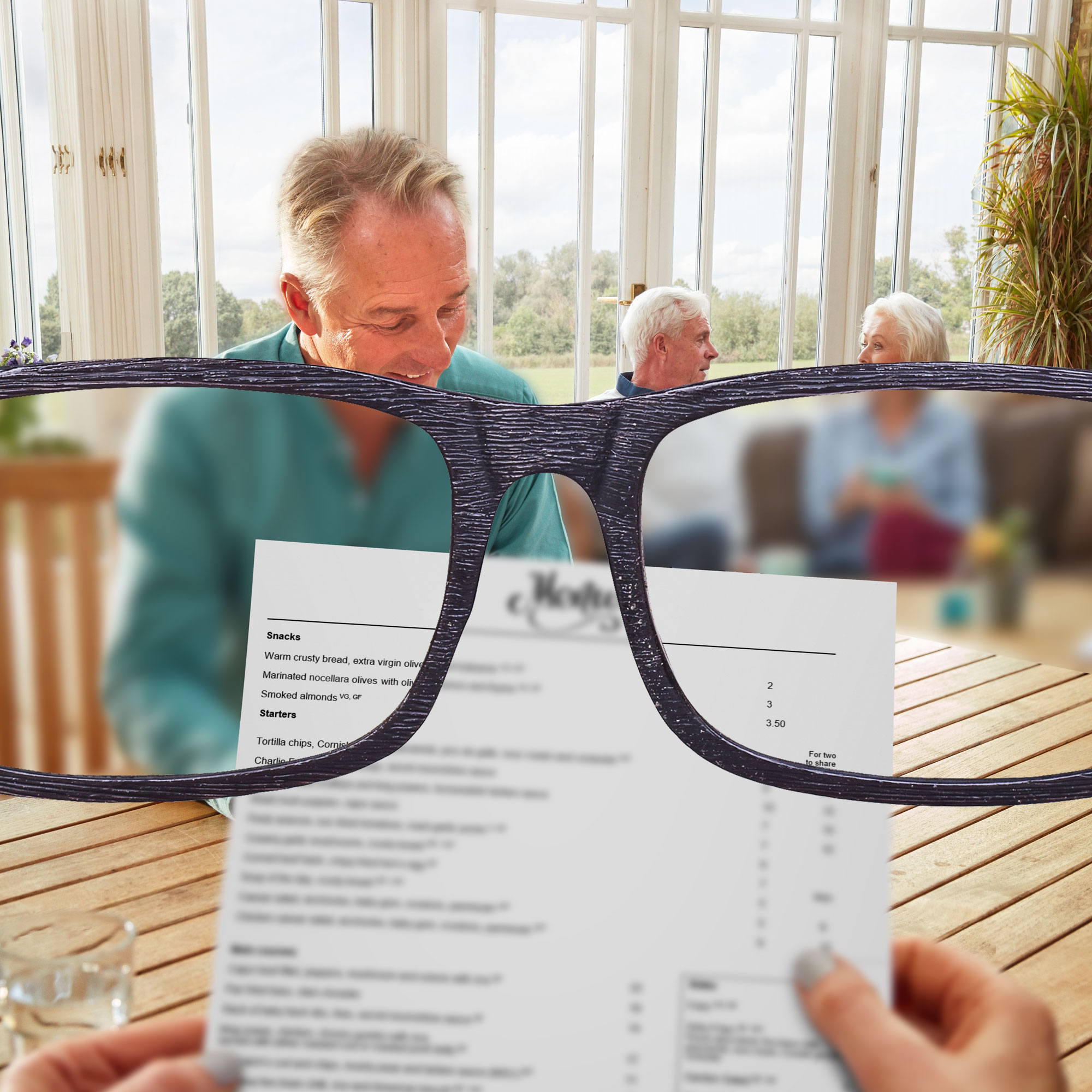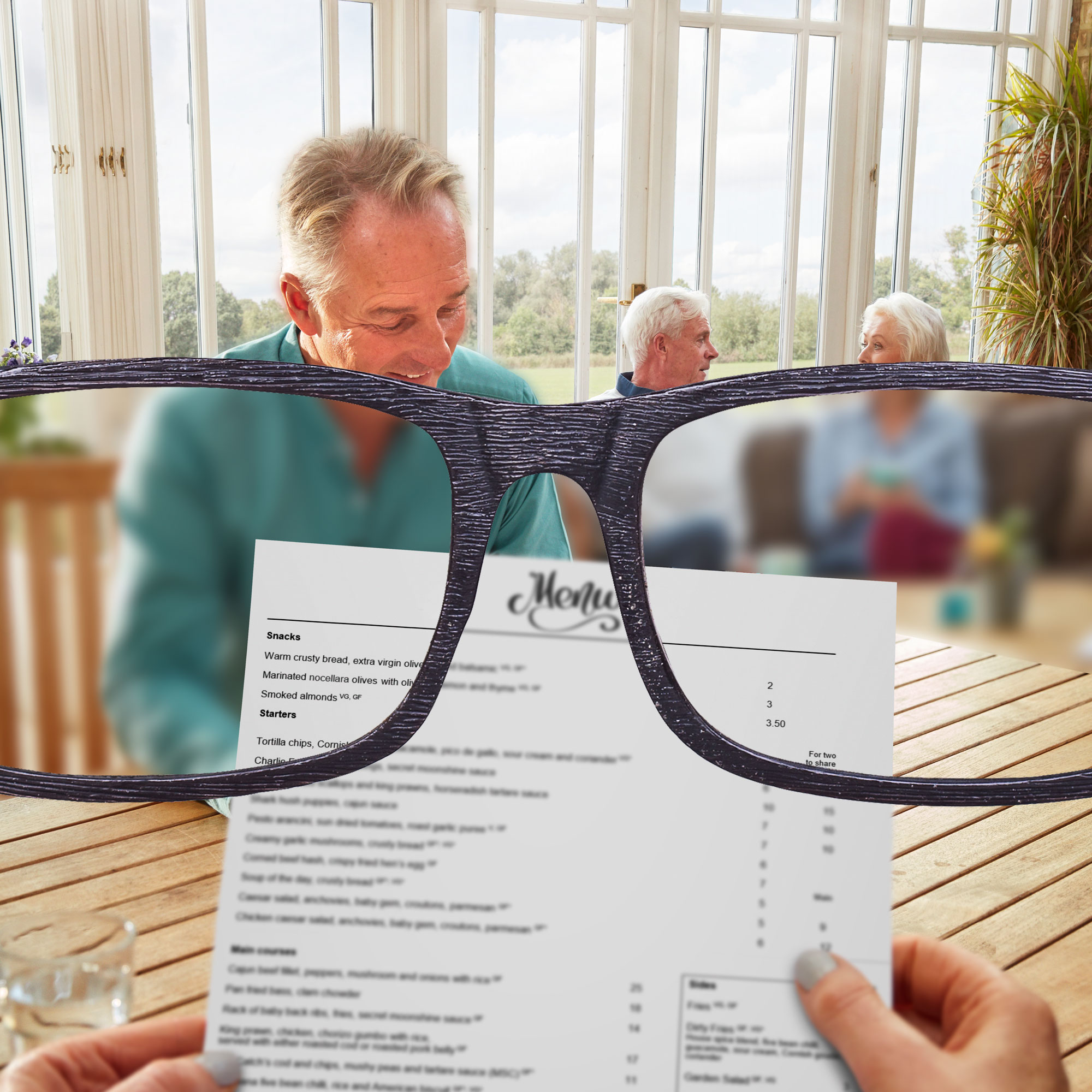Monovision
Monovision is a popular surgical technique that can expand your range of clear vision compared to some lens options. With monovision, your surgeon will work with you to determine two different IOL powers that work together to provide you with more everyday vision, especially for near activities.
- 97% of monovision patients are satisfied with their visual outcomes1
- Over 80% report little to no continued use of their glasses2
While monovision will often give you excellent vision for distance and intermediate activities, you may still need to wear glasses for some fine print.
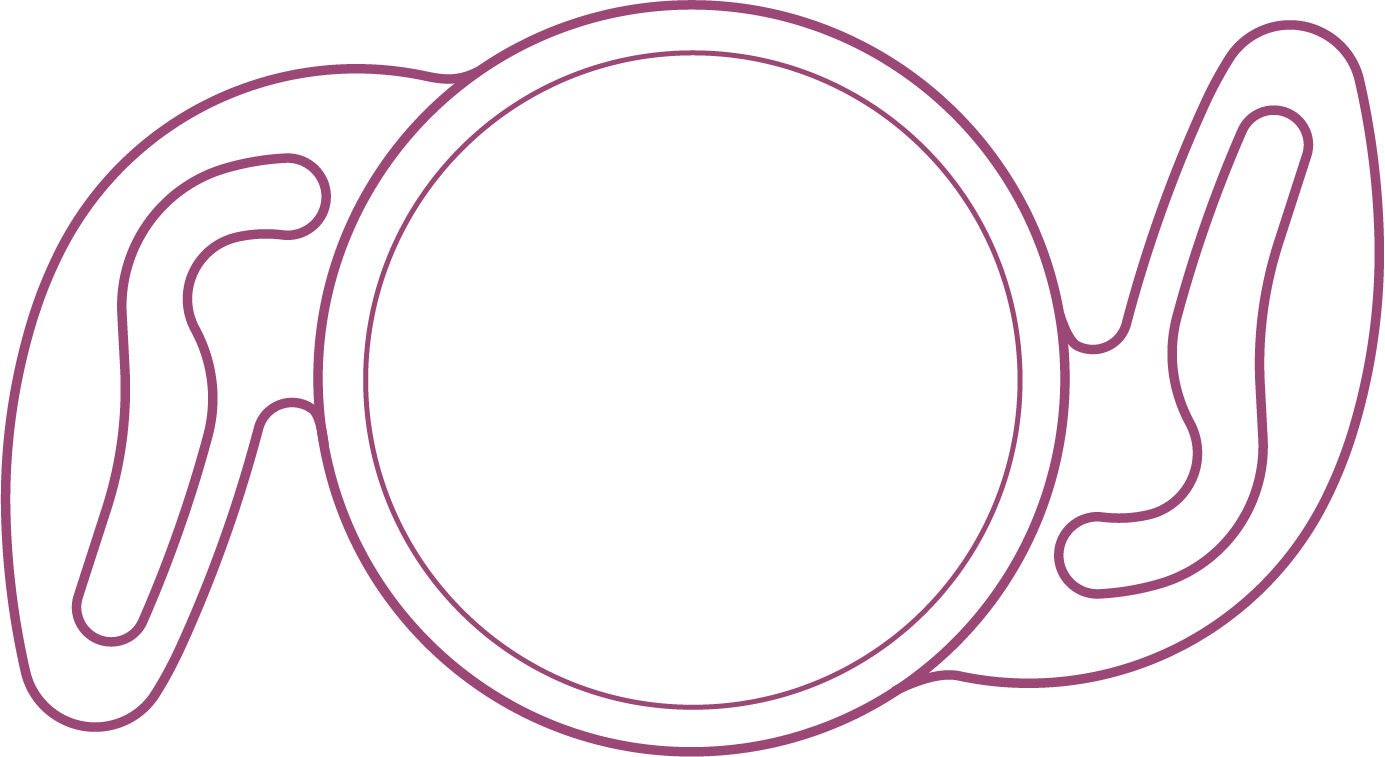
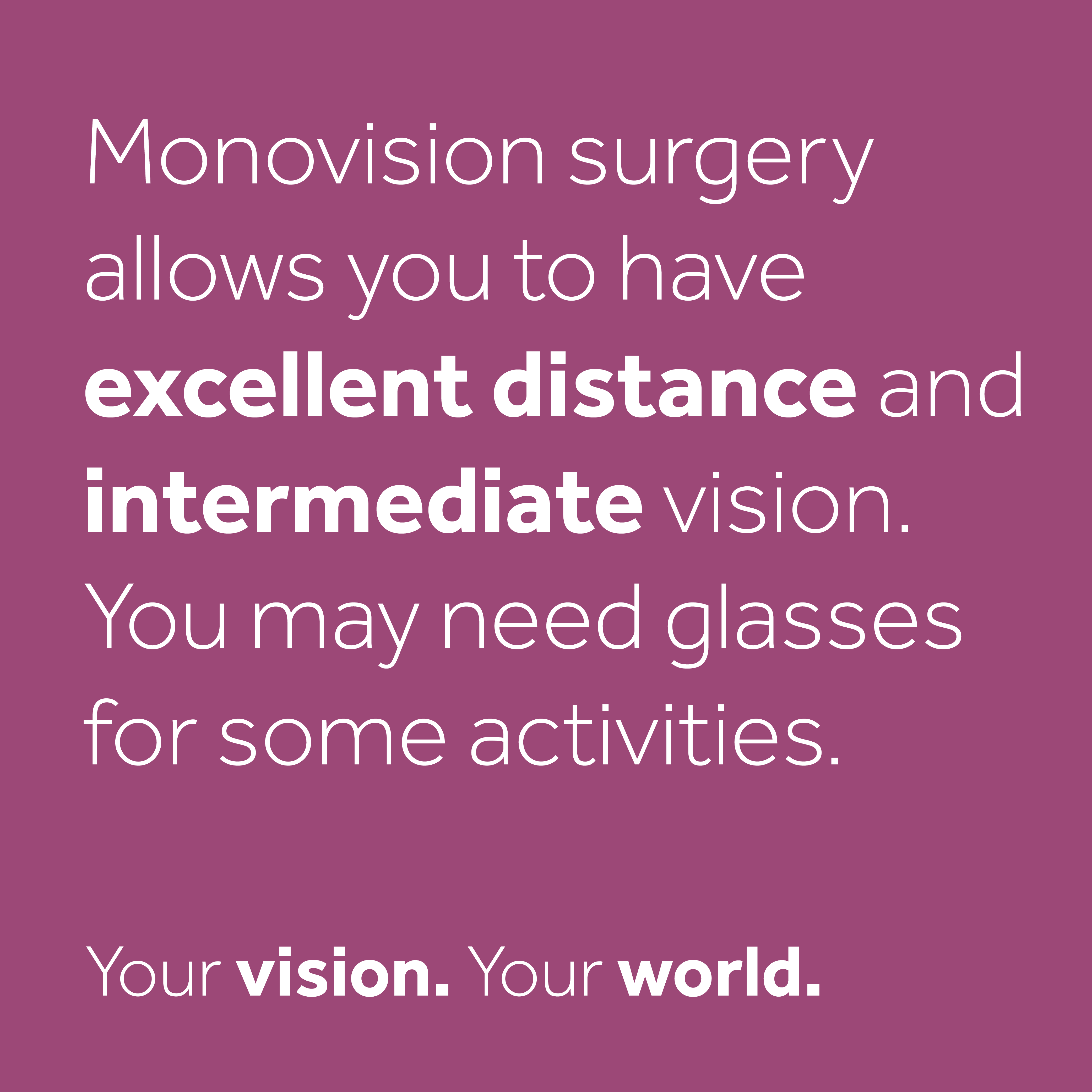
- Zhang F, Sugar A, Barrett G. Pseudophakic monovision: A clinical guide. Thieme. 2018
- Zhang F, Sugar A, Jacobsen G, Collins M. Visual function and spectacle independence after cataract surgery: bilateral diffractive multifocal intraocular lenses versus monovision pseudophakia. J Cataract Refract Surg. 2011;37(5):853–858
What can I see clearly with monovision?
Enhanced monovision
with RayOne EMV
Monovision is a trustworthy and proven technique performed on millions of patients around the world each year,3 but when performed with traditional monofocal IOLs rather than RayOne EMV, you could experience reduced visual quality at distance and a smaller range of intermediate vision.
Traditional monofocal IOLs may even cause a small gap between the areas with crisp vision (sometimes referred to as the ‘Not Sharply Focused Zone’) in which you may have reduced visual clarity. However, as demonstrated in the illustrative image below, RayOne EMV is designed to solve these problems.4
RayOne EMV has a unique optical design that provides uninterrupted vision throughout its focal range, diminishing the Not Sharply Focused Zone (NSFZ).5 It is also designed to offer clearer vision in low-light conditions4 and has the potential to increase your quality of vision for near activities compared to traditional monofocal lenses.5
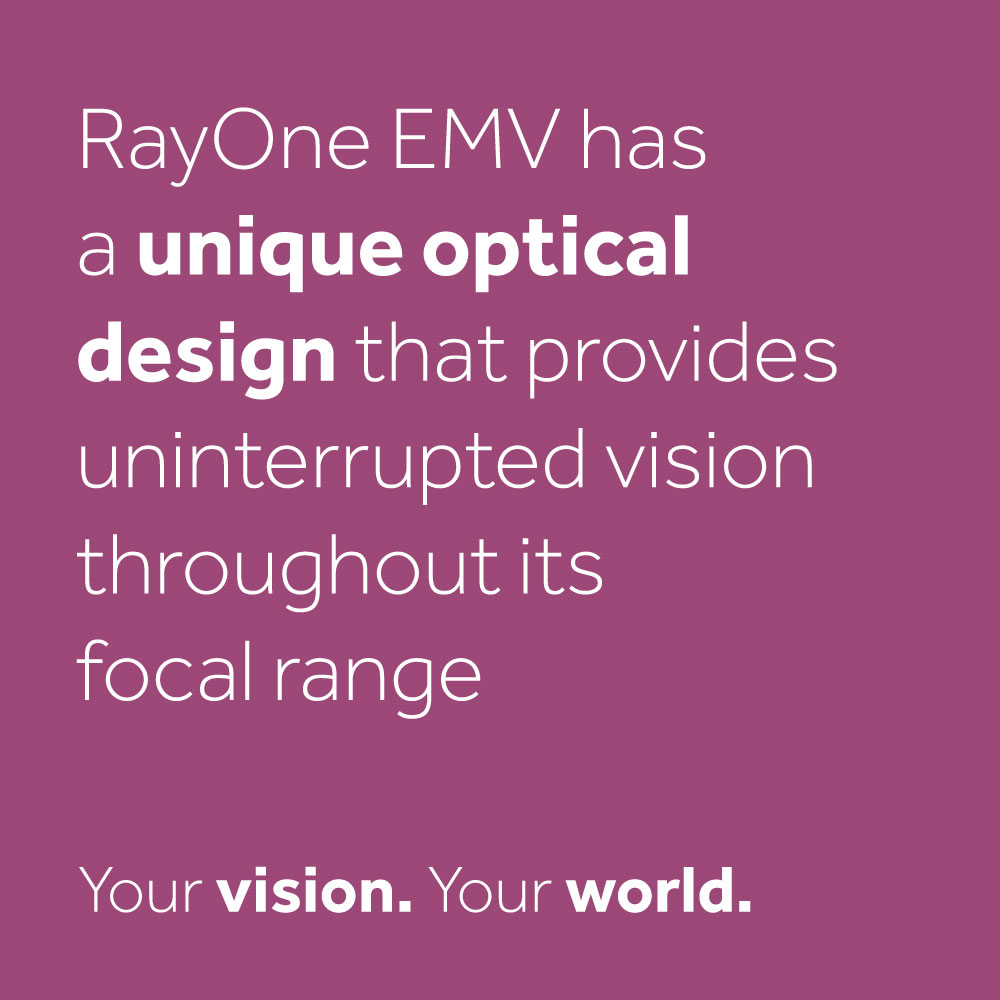
- 2021 IOL Market Report. Market Scope, LLC. 2021
- Royo, M. RayOne EMV and TECNIS Eyhance: A Comparative Clinical Defocus Curve. Data on file. 2021
- Rayner. Data on file. 2021.
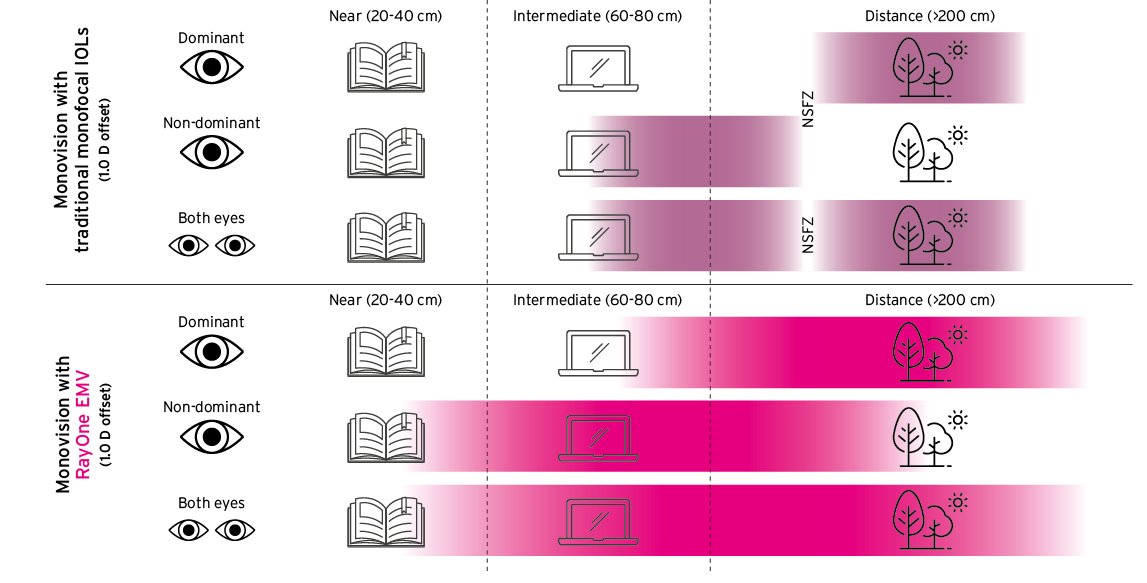
What can I see clearly with enhanced monovision?
If you have some astigmatism in your eye, then your surgeon may be able to correct this at the same time with RayOne EMV Toric.






